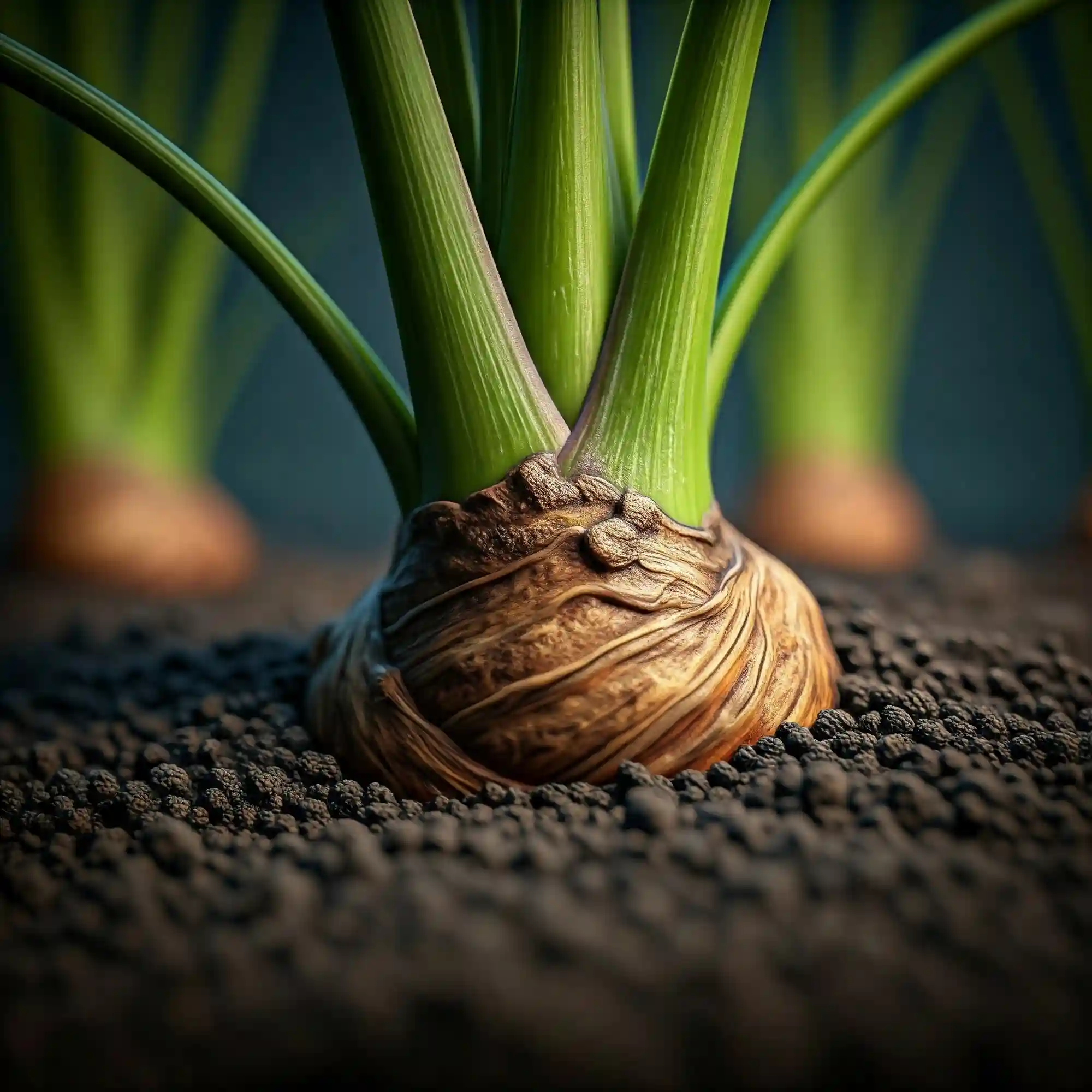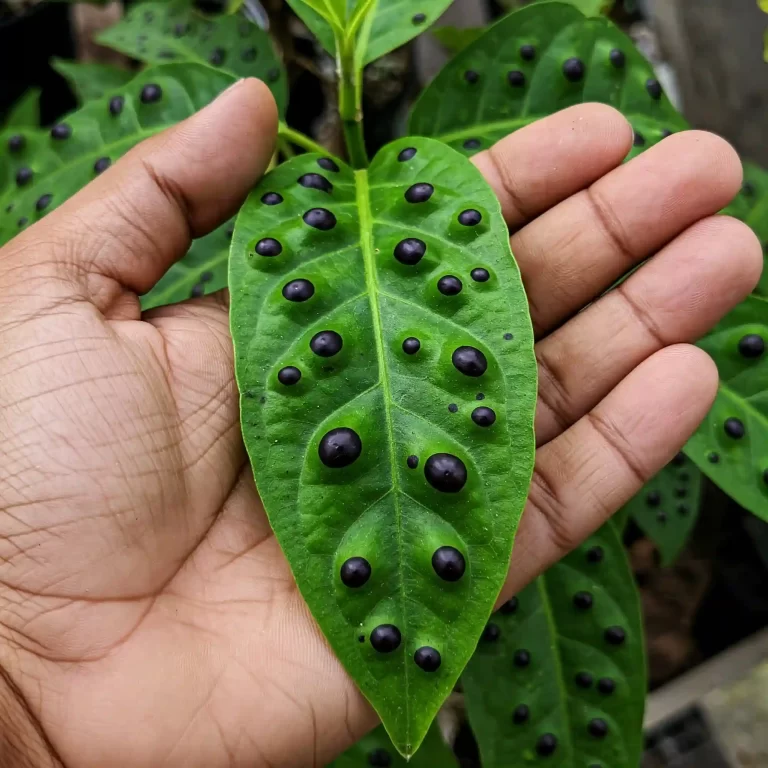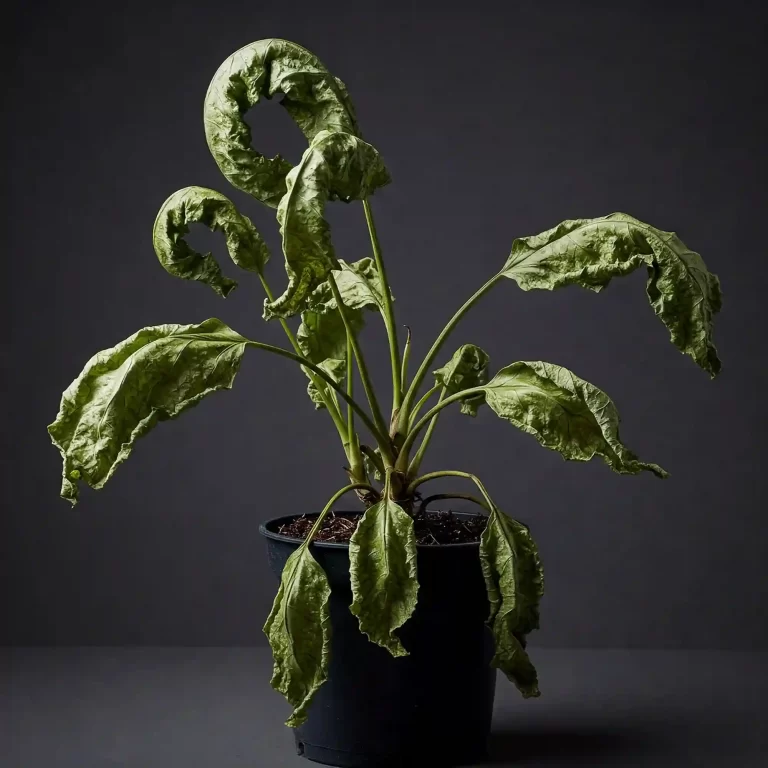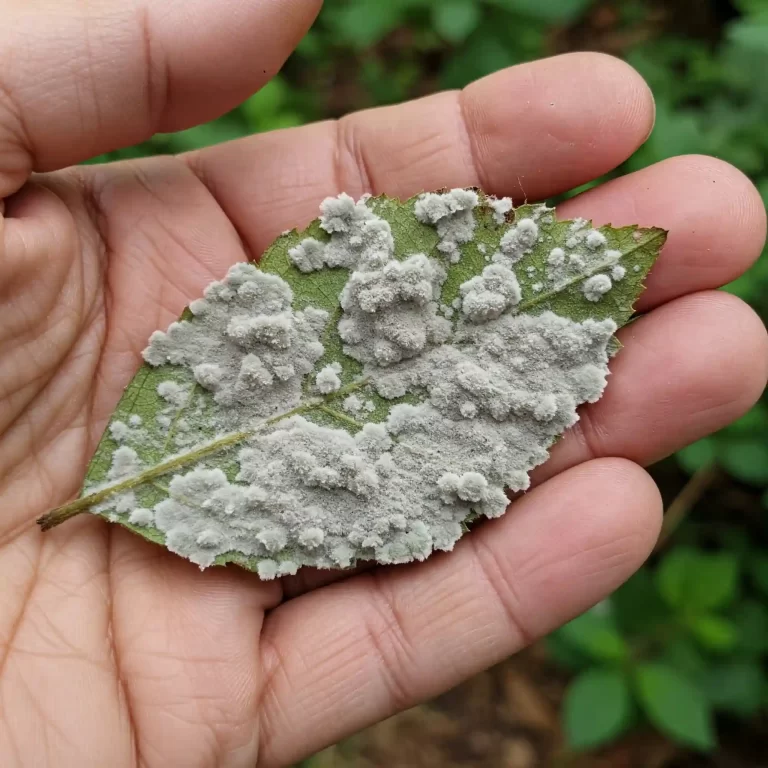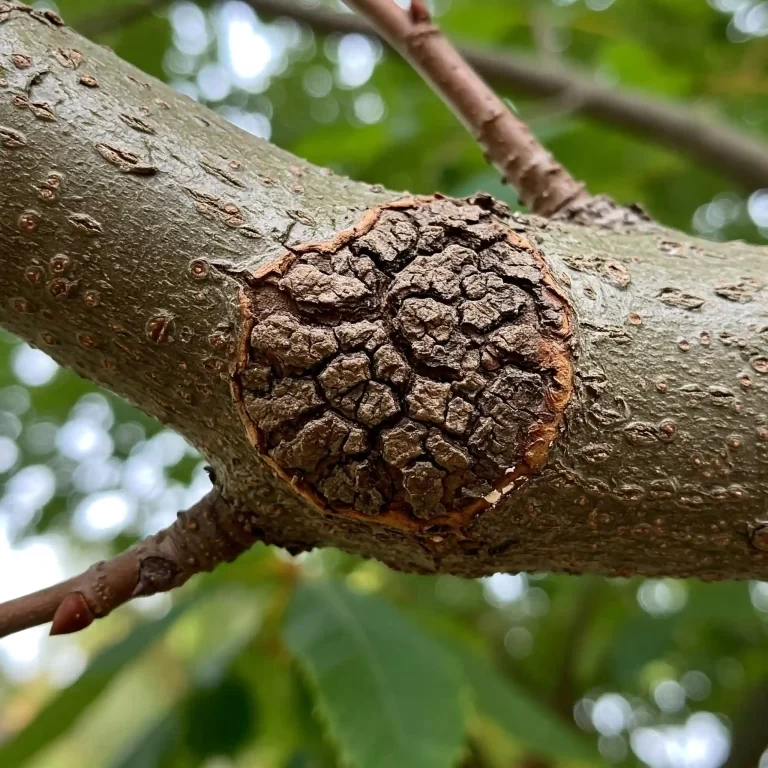Have you ever noticed your prized tomato seedlings suddenly wilting, their stems turning mushy at the base, despite your diligent watering? It’s a gut-wrenching sight – all your hard work seemingly going to waste. This isn’t just a minor setback; it’s likely basal stem rot, a fungal disease that can decimate your garden if left unchecked. The frustration of watching your plants succumb to this invisible enemy is something I’ve experienced firsthand, and I know how disheartening it can be. But don’t despair! There are effective ways to combat and prevent this problem. In this guide, I’ll share proven strategies to protect your plants from basal stem rot and ensure a thriving garden.
What is Basal Stem Rot?
Basal stem rot is a fungal disease that targets the base of a plant’s stem, typically at or just below the soil surface. This infection disrupts the plant’s vascular system—the intricate network responsible for transporting water and vital nutrients from the roots to the rest of the plant. When this system is compromised, the plant’s health deteriorates rapidly, leading to characteristic symptoms like wilting, decay, and ultimately, plant death. I’ve seen healthy seedlings collapse within days of showing the first signs of infection, a stark reminder of the disease’s aggressive nature. You might be asking, what exactly causes this problem?
Several soilborne fungi are the main culprits behind basal stem rot. These microscopic organisms thrive in specific environmental conditions, making some gardens more susceptible than others. Here are the most common fungal pathogens involved:
- Rhizoctonia solani: This is one of the most widespread and destructive soilborne pathogens. It can attack a broad range of plants, causing damping-off in seedlings and stem rot in mature plants. Rhizoctonia is particularly active in warm, moist soils. I’ve noticed its devastating effects especially during periods of heavy rainfall followed by warm temperatures.
- Fusarium oxysporum: This fungus is known for its ability to persist in the soil for long periods, even in the absence of a host plant. Different strains of Fusarium specialize in attacking specific plant species, making it crucial to identify the particular strain affecting your garden. Fusarium often causes wilting and yellowing of leaves, in addition to stem rot.
- Sclerotium rolfsii: This pathogen is characterized by the production of small, round, sclerotia (hardened fungal structures) that resemble mustard seeds. These sclerotia allow the fungus to survive harsh conditions in the soil. Sclerotium thrives in warm, humid conditions and can cause significant damage to a variety of plants, especially in southern climates. I’ve observed that it’s particularly problematic in gardens with poor air circulation.
- Pythium and Phytophthora: While technically oomycetes (water molds), these pathogens are often grouped with fungi due to their similar disease symptoms and management strategies. They are particularly problematic in excessively wet or poorly drained soils, causing root rot and damping-off in addition to basal stem rot. They are most active in cool, wet soil conditions.
These fungi spread through various means, including:
- Contaminated soil: Infected soil can harbor fungal spores for extended periods, ready to infect new plants.
- Splashing water: When watering, splashing water can carry fungal spores from infected soil to healthy plants.
- Contaminated tools: Garden tools that have come into contact with infected soil can spread the disease to other areas of the garden.
- Infected plant material: Introducing infected seedlings or cuttings into your garden can introduce the pathogen.
Understanding the specific fungi involved and how they spread is key to implementing effective prevention and control measures. I’ve learned from experience that a multi-pronged approach, targeting both the pathogen and the environmental conditions that favor its growth, is the most successful strategy. You’ll find that by understanding the enemy, you can better protect your garden.
Identifying Basal Stem Rot: Spotting the Signs Early
Early detection is crucial when dealing with basal stem rot. The sooner you identify the problem, the better your chances of saving your plants. From my experience, I’ve learned that regular observation is key. Take a few minutes each day to inspect your plants, paying close attention to the base of the stems. Here are the telltale signs to watch for:
- Wilting (Even with Adequate Watering): This is often the first and most noticeable symptom. If a plant wilts despite having moist soil, it’s a strong indicator of a problem with the vascular system, which basal stem rot directly affects. I remember one summer when my pepper plants started wilting on a particularly hot day. I initially thought they just needed more water, but upon closer inspection, I noticed the telltale signs of stem rot at the base.
- Yellowing of Lower Leaves: As the fungal infection disrupts the flow of nutrients and water, the lower leaves of the plant may begin to yellow. This yellowing can progress upwards as the disease worsens.
- Stunted Growth: Infected plants may exhibit significantly slower growth compared to healthy plants. They might appear smaller or less vigorous overall.
- Soft, Mushy, or Discolored Area at the Base of the Stem: This is the most definitive sign of basal stem rot. The affected area of the stem will feel soft and mushy to the touch and may appear discolored (brown, black, or even reddish in some cases). This discoloration is often accompanied by a constriction or narrowing of the stem at the base.
As the disease progresses, the symptoms become more severe:
- Dark Brown or Black Lesions on the Stem Near the Soil Line: These lesions are areas of dead tissue caused by the fungal infection. They may expand and encircle the entire stem, cutting off the plant’s supply of water and nutrients.
- Complete Collapse of the Plant: In severe cases, the stem will become so weakened that the plant will simply collapse at the base. This is often a rapid process, especially in young seedlings.
- Visible Fungal Growth (White or Cottony Mycelium in Some Cases): Under humid conditions, you might observe white or cottony fungal growth (mycelium) on the affected stem or the surrounding soil. This is a clear indication of fungal activity.
It’s important to remember that symptoms can vary slightly depending on the specific plant species affected. For example:
- Succulents: In succulents, the base of the stem might become soft and mushy, almost translucent.
- Seedlings: Seedlings are particularly vulnerable to a form of basal stem rot known as “damping-off,” where they collapse and die shortly after emerging from the soil.
- Woody Plants: In woody plants, the infection might manifest as cankers or lesions on the lower trunk or branches near the soil line.
Differentiating basal stem rot from other plant problems is essential for proper treatment. Here’s how to distinguish it from some common issues:
- Overwatering: While overwatering can create conditions that favor basal stem rot, it doesn’t directly cause the characteristic stem lesions. Overwatered plants may wilt, but their stems will not typically exhibit the soft, mushy texture associated with stem rot.
- Nutrient Deficiencies: Nutrient deficiencies can cause yellowing of leaves and stunted growth, but they won’t cause the stem to rot or develop lesions.
- Insect Damage: Insect damage might cause wilting or damage to the stem, but it will usually be accompanied by visible signs of insect activity, such as holes, chewed leaves, or the presence of insects themselves.
By carefully observing your plants and understanding these key symptoms, you can identify basal stem rot early and take appropriate action.
What Causes Basal Stem Rot? Understanding the Root of the Problem
Understanding the causes of basal stem rot is crucial for effective prevention and control. It’s not simply a matter of bad luck; specific conditions and pathogens must be present for the disease to take hold. From my years of gardening, I’ve observed that a combination of environmental factors and the presence of certain fungi creates the perfect storm for this disease. Let’s delve into the primary causes and contributing factors:
- Primary Causes: The Role of Soilborne Fungi: As we discussed earlier, several soilborne fungi are the direct cause of basal stem rot. These microscopic organisms reside in the soil and attack plant tissues, particularly when conditions are favorable for their growth. Here’s a quick recap of the main culprits:
- Rhizoctonia solani: This fungus is a master of survival, persisting in the soil for long periods. It thrives in warm, moist conditions and can infect a wide range of plants.
- Fusarium oxysporum: This fungus is known for its host specificity, meaning different strains attack different plant species. It can also persist in the soil for years.
- Sclerotium rolfsii: This fungus produces sclerotia, hardened structures that allow it to survive harsh conditions. It prefers warm, humid environments.
- Pythium and Phytophthora: These water molds thrive in excessively wet conditions and are particularly damaging to seedlings and young plants.
- Contributing Factors: Creating the Ideal Environment for Disease: While the presence of these fungi is necessary for basal stem rot to occur, certain environmental factors can significantly increase a plant’s susceptibility. These factors create conditions that favor fungal growth and weaken the plant’s natural defenses:
- Overwatering: This is one of the most common contributing factors. Excessively wet soil creates an ideal environment for fungal growth and deprives plant roots of oxygen, making them more vulnerable to infection. I’ve learned that it’s always better to err on the side of underwatering than overwatering.
- Poor Drainage: Soil that doesn’t drain well retains excess moisture, creating the same conditions as overwatering. Heavy clay soils or compacted soils are particularly prone to poor drainage.
- Heavy or Compacted Soil: These soil types restrict root growth and limit air circulation, making plants more susceptible to soilborne diseases.
- High Humidity: High humidity can create a favorable environment for fungal growth, especially when combined with poor air circulation.
- Cool Temperatures: Some of the fungi that cause basal stem rot, such as Pythium and Phytophthora, thrive in cool, wet conditions.
- Overcrowding: When plants are crowded together, air circulation is reduced, and humidity can increase, creating a favorable environment for disease development.
- Poor Air Circulation: Good air circulation helps to dry out the soil surface and reduce humidity, making it less favorable for fungal growth.
- Wounds on the Plant Stem: Wounds or injuries on the plant stem can provide entry points for fungal pathogens.
- Seedling Susceptibility: Damping Off: Seedlings are particularly vulnerable to basal stem rot, often referred to as “damping off” in this stage. This is because their young, tender tissues are more susceptible to fungal infection. Damping off can cause seedlings to collapse and die shortly after emerging from the soil.
By understanding these causes and contributing factors, you can take proactive steps to prevent basal stem rot in your garden. Creating a healthy growing environment for your plants is the best defense against this disease.
Basal Stem Rot Treatment: Effective Solutions for Infected Plants
Discovering basal stem rot in your garden can be disheartening, but it’s not always a lost cause. With prompt action and the right approach, you can often save infected plants and prevent the disease from spreading. In my experience, early intervention is key. The sooner you detect the problem, the better your chances of successful treatment. Let’s explore some effective solutions:
- Early Intervention: The Importance of Swift Action: As with most plant diseases, early detection is crucial for successful treatment of basal stem rot. If you notice the early symptoms, such as wilting or slight discoloration at the base of the stem, act quickly. The longer the infection persists, the more difficult it becomes to save the plant.
- Cultural Practices: Creating an Unfavorable Environment for the Fungus: Cultural practices involve modifying the growing environment to make it less hospitable for the fungal pathogens. These practices are often the most effective long-term solution for managing basal stem rot.
- Improving Drainage: This is perhaps the most critical step. Ensure your soil drains well by amending it with organic matter like compost or perlite. Avoid planting in areas where water tends to pool. If you’re growing in containers, make sure they have adequate drainage holes.
- Increasing Air Circulation: Good air circulation helps to dry out the soil surface and reduce humidity, making it less favorable for fungal growth. Space your plants properly to allow for good airflow. Prune lower leaves or branches that are close to the soil surface.
- Reducing Watering Frequency: Overwatering is a major contributing factor to basal stem rot. Allow the soil to dry out slightly between waterings. Water at the base of the plant to avoid wetting the foliage.
- Fungicide Application: A Targeted Approach: Fungicides can be effective in controlling basal stem rot, but it’s important to choose the right product and apply it correctly.
- Choosing the Right Fungicide: Look for fungicides that are specifically labeled for control of the fungi that cause basal stem rot (e.g., Rhizoctonia, Fusarium, Sclerotium). Copper-based fungicides, azoxystrobin, and thiophanate-methyl are some active ingredients that can be effective.
- Proper Application Methods: Follow the instructions on the fungicide label carefully. Apply the fungicide to the base of the plant and the surrounding soil. Repeat applications may be necessary, depending on the severity of the infection.
- Removing Infected Plants: Preventing the Spread: In severe cases, it may be necessary to remove infected plants to prevent the disease from spreading to healthy plants. Dispose of infected plants properly; do not compost them.
- Soil Solarization: Harnessing the Sun’s Power: Soil solarization is a non-chemical method of controlling soilborne pathogens. It involves covering the soil with clear plastic during the hottest part of the summer. The trapped solar radiation heats the soil to temperatures that are lethal to many fungal pathogens.
By implementing these treatment strategies, you can effectively combat basal stem rot and protect your plants. Remember, a combination of cultural practices and, if necessary, fungicide application is often the most successful approach.
Basal Stem Rot Prevention: Proactive Plant Care Strategies
Prevention, as they say, is better than cure, and this holds especially true for basal stem rot. By implementing proactive plant care strategies, you can significantly reduce the risk of this disease taking hold in your garden. From my experience, I’ve found that a holistic approach, focusing on creating a healthy growing environment for your plants, is the most effective way to prevent basal stem rot. Let’s explore some key preventative measures:
- Healthy Soil: The Foundation of Plant Health: The type of soil you use plays a crucial role in preventing basal stem rot. Well-draining soil is essential, as it prevents water from pooling around the base of the plant, creating an unfavorable environment for fungal growth.
- Improving Soil Drainage: If your soil is heavy clay or compacted, amend it with organic matter like compost, well-rotted manure, or perlite. These amendments improve soil structure and drainage.
- Raised Beds: Consider using raised beds, which naturally improve drainage and aeration.
- Proper Watering Techniques: Avoiding Overwatering: Overwatering is a major contributing factor to basal stem rot. Waterlogged soil creates the perfect environment for fungal pathogens to thrive.
- Watering Frequency: Allow the soil to dry out slightly between waterings. The frequency will depend on the weather, the type of plant, and the soil type.
- Watering at the Base: Water at the base of the plant, avoiding wetting the foliage. This helps to reduce humidity around the plant and prevents the spread of fungal spores.
- Plant Spacing and Air Circulation: Promoting Healthy Growth: Proper plant spacing is essential for good air circulation, which helps to dry out the soil surface and reduce humidity.
- Spacing Guidelines: Follow the recommended spacing guidelines for each plant species.
- Pruning: Prune lower leaves or branches that are close to the soil surface to improve air circulation.
- Sanitation Practices: Preventing the Spread of Disease: Maintaining good sanitation practices in your garden can help to prevent the spread of fungal pathogens.
- Cleaning Tools: Clean your garden tools regularly, especially after working with infected plants. Use a solution of bleach and water or a commercial disinfectant.
- Removing Debris: Remove any plant debris from the garden, as it can harbor fungal spores.
- Crop Rotation: Disrupting Disease Cycles: Crop rotation involves planting different types of crops in the same area each year. This helps to disrupt the life cycle of soilborne pathogens and prevent them from building up in the soil.
- Choosing Resistant Varieties: Selecting for Disease Resistance: When possible, choose plant varieties that are resistant to basal stem rot. This can significantly reduce the risk of infection.
- Seed Starting Practices: Protecting Young Seedlings: Seedlings are particularly vulnerable to basal stem rot, so it’s important to take extra precautions when starting seeds.
- Sterile Starting Mix: Use a sterile seed starting mix to prevent fungal pathogens from infecting young seedlings.
- Good Air Circulation: Provide good air circulation around seedlings to prevent damping off.
By implementing these preventative measures, you can create a healthy growing environment for your plants and significantly reduce the risk of basal stem rot.
Basal Stem Rot FAQs (Addressing Your Burning Questions)
I’ve compiled some frequently asked questions about basal stem rot to provide you with quick and concise answers. These are questions I often hear from fellow gardeners, and I hope they’ll be helpful to you as well.
- How to organically treat basal stem rot in tomato seedlings?
For organic treatment of basal stem rot in tomato seedlings, I recommend focusing on improving airflow and soil conditions. Gently remove any infected seedlings to prevent the spread of the disease. Ensure proper spacing between the remaining seedlings to promote air circulation. You can also try using a compost tea or a natural fungicide like neem oil, but be sure to test it on a small area first. - What are the early signs of basal stem rot on impatiens?
Early signs of basal stem rot on impatiens include wilting, even when the soil is moist, and a darkening or softening of the stem near the soil line. You might also notice the lower leaves turning yellow or drooping. - Best cultural practices to prevent basal stem rot in container gardens?
To prevent basal stem rot in container gardens, I recommend using well-draining potting mix and ensuring your containers have drainage holes. Avoid overwatering and water at the base of the plant. You can also elevate the containers to improve air circulation. - Is basal stem rot contagious to other plants in the same pot?
Yes, basal stem rot can spread to other plants in the same pot, especially if they are crowded or if the soil is consistently moist. It’s best to remove infected plants promptly to prevent the disease from spreading. - How to improve soil drainage to prevent basal stem rot in herbs?
To improve soil drainage for herbs, I recommend amending the soil with coarse sand, perlite, or vermiculite. These materials help to create air pockets in the soil, allowing excess water to drain away. - Effective fungicide treatment for basal stem rot on woody ornamentals?
For woody ornamentals, I recommend using a fungicide containing copper-based compounds or azoxystrobin. Be sure to follow the instructions on the product label carefully and apply the fungicide to the affected area and the surrounding soil. - Can overwatering cause basal stem rot in succulent cuttings?
Yes, overwatering can create conditions that favor fungal growth, making succulent cuttings more susceptible to basal stem rot. It’s important to allow the cuttings to dry out slightly between waterings and to use a well-draining rooting medium. - What does basal stem rot look like on cucumber plant stems?
On cucumber plant stems, basal stem rot typically appears as a dark, sunken lesion near the soil line. The affected area may be soft or mushy to the touch, and the plant may wilt or collapse. - How to save a plant with early stages of basal stem rot naturally?
If you catch basal stem rot early, you might be able to save the plant by improving drainage and air circulation. Gently remove any affected leaves or stems and allow the soil to dry out slightly between waterings. You can also try applying a natural fungicide like neem oil. - Identifying and controlling basal stem rot in greenhouse grown peppers?
In greenhouse-grown peppers, it’s important to maintain good air circulation and humidity levels. Avoid overhead watering and ensure proper spacing between plants. If you identify basal stem rot, remove infected plants promptly and treat the remaining plants with a fungicide if necessary.
Conclusion: Your Partner in Preventing Basal Stem Rot
Basal stem rot can be a formidable foe in the garden, but with a proactive approach and a good understanding of its causes and prevention, you can effectively protect your plants. I’ve found that vigilance and consistent care are the best defenses against this disease.
Here are some key takeaways to remember:
- Prevention is Key: Focus on creating a healthy growing environment for your plants. This includes using well-draining soil, avoiding overwatering, ensuring good air circulation, and practicing good garden sanitation.
- Early Detection is Crucial: Regularly inspect your plants for early signs of basal stem rot. The sooner you identify the problem, the better your chances of saving your plants.
- Integrated Approach: A combination of cultural practices and, if necessary, fungicide application is often the most effective approach to managing basal stem rot.
I encourage you to share your experiences and ask any further questions you may have. Together, we can create thriving gardens free from the threat of basal stem rot.
